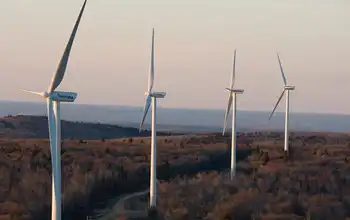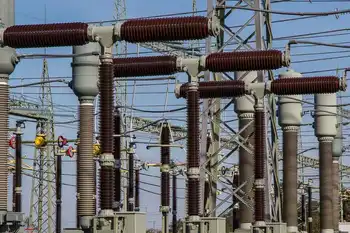Wind farm pumps up power firmÂ’s profits
LONDON, ENGLAND - Inflation-busting increases in electricity prices - which were supposed to pay for a massive expansion of wind power - have boosted the profits of power companies instead.
Under a controversial Government scheme, British consumers pay £1 billion a year in their fuel bills to subsidise the drive towards renewable energy.
The cash is supposed to act as an incentive to companies wanting to build green generators such as wind farms or hydro-electric dams.
However, because of a loophole in the system - and the vocal opposition to new turbines in the countryside - the scheme has failed to produce the expected surge in wind power. Instead, most of the money has lined the pockets of energy companies.
Energy experts yesterday warned that the "Renewable Obligation" subsidy system is "hugely flawed" and places a unfair burden on families at a time when household bills are soaring. Last year the energy watchdog Ofgem called for the Renewables Obligation to be scrapped. "It is a very expensive way of providing support for renewables," said regulator Andrew Wright.
Energy expert Peter Atherton, from financial analysts Citi Investment Research, added: "It's a bonanza. Anyone who can get their nose in the trough is trying to."
Under European plans published last month, Britain must produce 40 per cent of its electricity from green sources by 2020. Today it produces less than 5 per cent. To meet the target the UK would need to build around two wind turbines every day for the next 12 years.
To encourage more green energy, the Government launched the Renewables Obligation scheme. Each year, power suppliers must buy a fixed proportion of electricity from green sources. If they fail to meet the target they pay a fine to Government.
That money is then split between the owners of existing wind farms.
The cost of the Renewables Obligation is passed on to consumer in their fuel bills and is rising sharply each year. In 2006 it was £600 million. By 2020 it will cost consumers £3 billion.
Yet despite the spiralling fuel bills, the amount of green electricity produced in the UK is rising slowly. In 2005 just 4.2 per cent of the UK's electricity was renewable.
In 2006, the last year for which official figures were available, it was 4.6 per cent.
Although the money is being passed on to wind farm owners, lengthy planning delays have held up many wind farms. In 2007 an extra 427 megawatts of wind capacity were built Britain - compared-with 630 in 2006 and 447 in 2005, according to the British Wind Energy Association.
Many of the small wind farmers have been bought up by the major energy companies. RWE Npower is one of the biggest owners of in the UK and is though to make £90 million a year from wind.
Ministers have pledged to reform the planning system to make it easier for new wind farms to spring up.
"The scheme is designed to encourage investment in renewable energy by making things like wind farms more profitable," said a spokesman for the Department for Business.
"It should come as a surprise that there a cost associated with this. Renewables are more expensive, but they play a key role in tackling climate change."
Wind farm owners insist that their profits are not excessive - and that without subsidies, no business would invest in wind power.
Gordon Edge, of the British Wind Energy Association, said the convoluted planning system was causing the delays.
"It's much more difficult to get planning permission for wind developments than for developments like roads, motorways or other infrastructure," he said.
Related News

TransAlta brings online 119 MW of wind power in US
CALGARY - TransAlta Renewables Inc says two US wind farms, with a total capacity of 119 MW and operated by its parent TransAlta Corp, became operational in December.
The 90-MW Big Level wind park in Pennsylvania started commercial operation on December 19. It sells power to technology giant Microsoft Corporation under a 15-year contract.
The 29-MW Antrim wind facility in New Hampshire is operational since December 24. It is selling power under 20-year contracts with Boston-based non-profit hospital and physicians network Partners Healthcare and New Hampshire Electric Co-op.
The Canadian renewable power producer, which has economic interest in the two wind parks, said…



